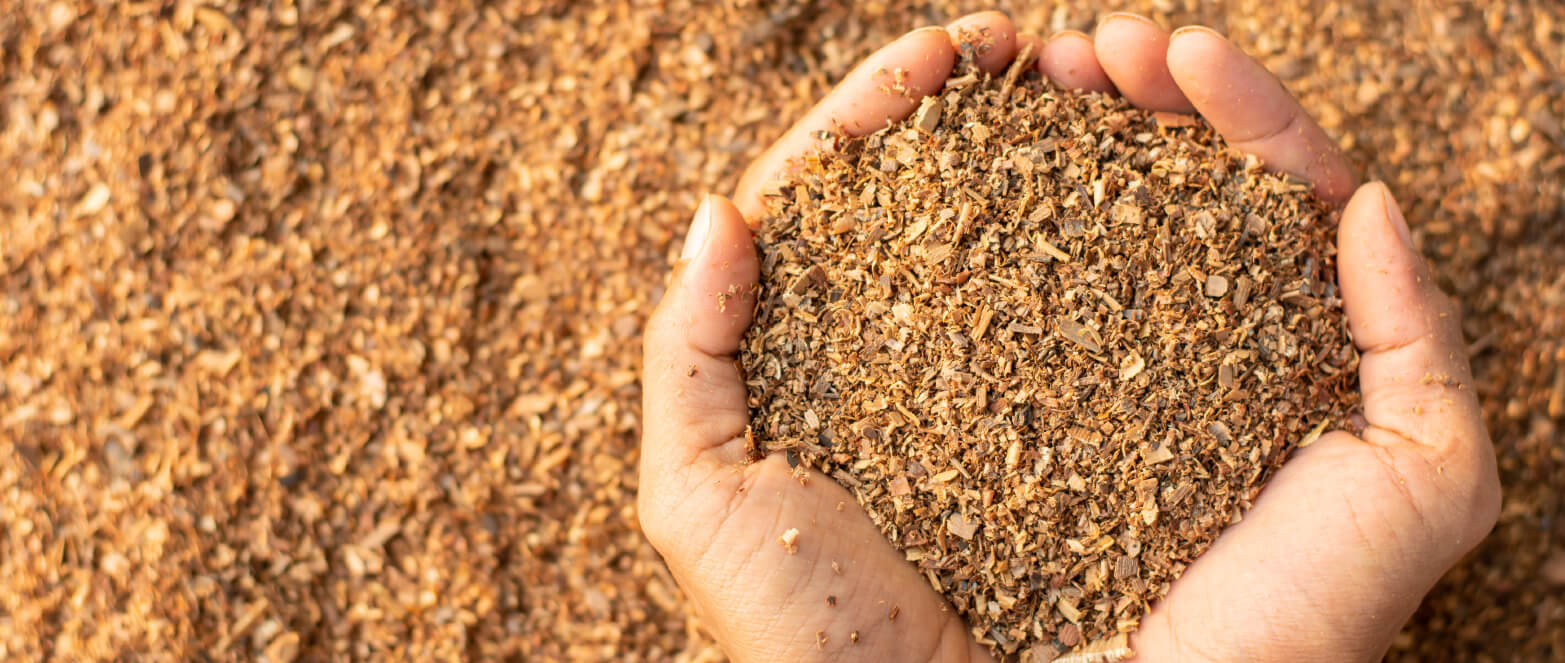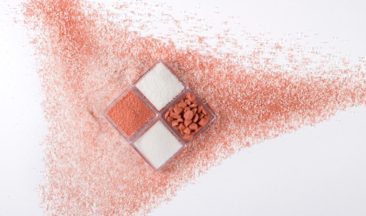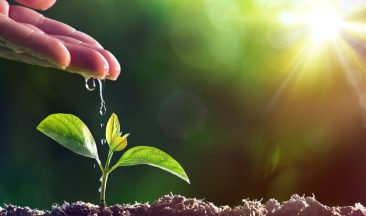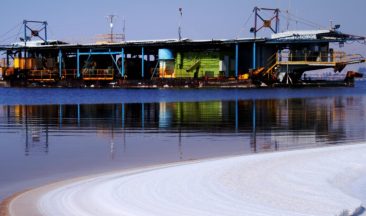Wood fibers, derived from different wood sources, have been gaining attention as a sustainable and versatile growing material in ornamental horticulture. From soil amendment to mulch and container substrates, wood fibers offer various benefits, such as improving growing media’s structure and altering water retention. In addition, they are a renewable resource that can help reduce waste and improve environmental sustainability.
In ornamental horticulture, where plants are megrown and sold for decorative purposes, starting the plants off on the right foot with the best-growing medium is critical. Wood fiber is a promising and sustainable alternative to traditional growing media.
How Wood Fibers are Used in Ornamental Horticulture
Wood fiber has become a popular component in horticultural container production. There is significant variation in physical and chemical properties depending on the wood species used, the manufacturing process, and the age of the material.
Different hardwood and softwood tree species have been evaluated for use in growing media components, but most have been found to be unsuitable. Peat-based mixes containing 20-30% wood fiber can produce good plant growth, and the challenge for the growing media industry is to create successful peat-free mixes using only peat alternative materials.
Wood fibers are now commonly used in ornamental horticulture in different parts of the world as popular alternatives to peat materials. They are cost-effective, making them an attractive option for commercial growers.
In addition to their use in traditional soil-based growing systems, they are also used in hydroponics and soilless growing systems. These systems rely on a nutrient-rich water solution to give plants the necessary nutrients for growth. The use of wood fibers in these systems can help to improve the physical properties of the growing substrate, such as water retention and aeration.
Wood fibers are also increasingly being used in urban gardening and green roof applications. In these settings, space is often limited, and growing media must be lightweight and easy to transport. The lightweight nature and good drainage of wood fibers make them an attractive option in places where heavy materials are not suitable. Green roofs, in particular, benefit from their use as they can provide a natural way to filter and retain rainwater, reducing runoff and improving stormwater management.
Benefits of Wood Fibers in Ornamental Horticulture
Wood fibers have become increasingly popular in ornamental horticulture due to their numerous benefits for plant growth and development. When blended with peat – even at low rates – it can improve peat’s growing characteristics and improve the sustainability of the growing medium. The materials interlock, forming a unified, structured substrate through a new matrix.
One of the key advantages of using wood fibers in growing media is their ability to improve structure and drainage. This is particularly important for container-grown plants, as it allows for better root development and helps prevent waterlogging and other issues that can lead to poor plant health. Additionally, they can improve air exchange in the growing media, which further supports healthy root growth and promotes overall plant vigor.
In addition to these benefits, wood fiber mulch has been shown to promote improved root development and plant growth. This is due in part to their fibrous nature, which provides a suitable substrate for root growth and enables better nutrient uptake. As a result, plants grown in wood fiber-based media may exhibit improved resistance to environmental stresses and greater tolerance to drought conditions.
Another important benefit is their reduced environmental impact. Unlike traditional peat-based growing media, wood fibers are a sustainable and renewable resource that can be produced without causing harm to natural ecosystems. Additionally, they can help reduce waste by providing a use for wood by-products that might otherwise be discarded.
Overall, the benefits of wood fibers in ornamental horticulture are clear. Improved structure and drainage, air exchange, root development, and plant growth are just some of the advantages of using wood fiber-based growing media. In addition, they can help reduce environmental impact and promote sustainable practices in the horticultural industry.
Wood Fiber and Peat Growing Media Alternatives
Peat has been the predominant growing media in ornamental horticulture. It’s well-liked for its structure that creates good contact with plants’ fine root hairs. It has great water-holding capacity and good aeration and naturally has both low salinity and a low pH.
It’s easy to add nutrients to tailor the growing media to the specific plant species. These properties create great growing conditions for young plants.
However, peat is not considered a renewable resource, and its environmental profile has been challenged the recent years. The extraction of peat has been associated with carbon release, and thus its use has been discouraged. At the same time, global demand for growing media is estimated to increase four-fold by 2050, based on the expected growth of the world’s population. These challenges have created a true market for peat alternatives that help reduce the carbon footprint in agriculture.
Creating peat-free potting soil or compost is a challenging task due to its unique and successful properties. While peat moss alternatives may be compared to peat in terms of their performance, they must ultimately be judged on their own merits and managed based on their unique properties.
These properties may differ from traditional peat-based mixes and therefore require growers to adopt different cultural practices. Nevertheless, researchers are focused on finding sustainable, high-performing peat moss alternatives, and one option is a clear frontrunner.
“I think the scientific community across Europe and North America are all in fairly strong agreement that the material that has the greatest potential to be developed further and to be used abundantly is engineered wood fiber,” said Dr. Brian Jackson, a researcher in horticultural science at North Carolina State University. High-performing peat-free soil is possible with the right technology.
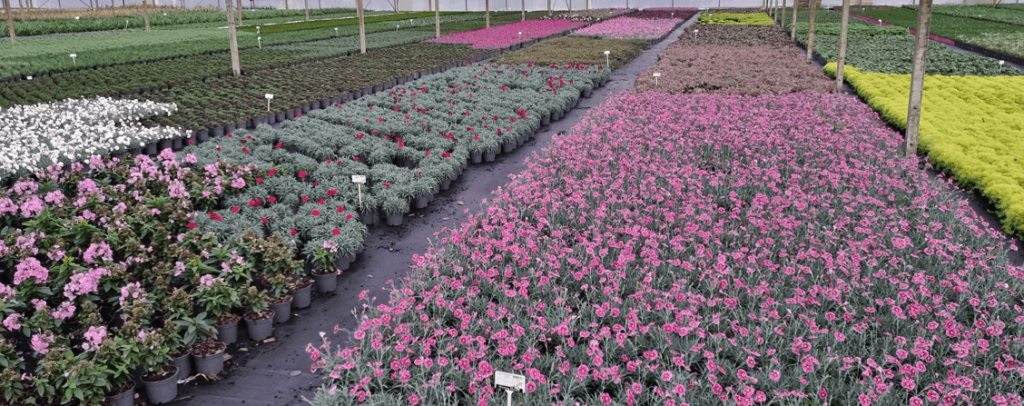
Fibagro Advance for A Wood Fiber, Peat-Free Soil Future
Fibagro Advance is a wood fiber substrate that has been developed to be used in peat-free or peat-reduced soil growing media. It’s manufactured and sustainably sourced in the UK using local sawmills by-products certified by FSC®.
Fibagro Advance is an exciting innovation developed by experts in manufacturing, environmental sustainability, and horticulture. Dr. Eleni Siasou has worked for ICL for six years, in the Professional Horticulture Division in the UK and now also in the Open Innovation Unit for ICL Global. She investigates novel products and was heavily involved in the effort to bring Fibagro Advance to market. She shared some of the backstories on the creation of Fibagro Advance.
The wood fibers have been around the industry for some time. There are different ways to produce them and different sources to obtain them. Consequently, they have gained popularity although they are not identical materials, and customers initially had reservations. It was necessary to optimize the production process. Our approach involved engineering and refining the manufacturing method for wood fibers, resulting in a well-structured material that blends seamlessly with other substances, creating a high-quality mix.
In fact, Fibagro Advance has been engineered to address common wood fiber challenges, such as slumping, water retention, nitrogen drawdown, and buffering capacity. The substrate forms a unique matrix when blended with raw materials like peat, coir, and bark due to the split-end fibers that are produced from the thermo-mechanical process.
More on the subject:
Top 10 Agriculture Trends to Watch in 2024
The Importance of Soil Health
Fibagro Advance can be blended at very high percentages as a peat-free or peat-reduced growing medium because of how it’s processed. ICL conducted specific trials to ensure the quality and performance of Fibagro Advance in a range of conditions and mixes.
Fibagro Advance has excellent air-filled porosity and water-holding capacity, facilitating good rooting, drainage, and ease of irrigation management. At the same time, the high CEC of the substrate can retain nutrients and help reduce leachate.
The Fibagro substrate is a successful peat alternative product addressing the challenges of professional horticulture and can be purchased with full ICL horticulture nutrition and wetting agent packages, guaranteeing consistency through thermo-mechanical processing.
Fibagro Advance can be used with technically advanced fertilizers like Osmocote 5 controlled release fertilizer and specially formulated fertilizers and wetting agents to enhance plant growth and quality. This significantly reduces the challenges associated with wood fiber substrates and helps maximize plant quality.
Most of all, Fibagro Advance addresses environmental concerns and sustainability needs for horticulture companies. ICL is intently focused on sustainability, which held true in the over three-year development of FIbagro Advance. Fibagro Advance came from exploring a local sawmill’s by-products derived from responsibly managed forests.
“Our main R&D strategies are to turn by-products and waste materials from other industries into successful materials for professional horticulture based on a circular economy principle. Using renewable resources to produce suitable and sustainable growing media is key to us,” said Dr. Siasou.
Overall, Fibagro Advance is a sustainable and high-performing peat-free potting soil option, designed to meet the needs of modern horticulture. Growers looking for an environmentally friendly, peat-free compost growing media that still delivers excellent plant growth and quality will find Fibagro Advance to be an excellent choice.
